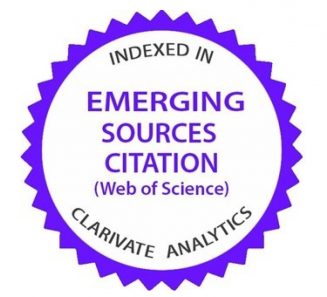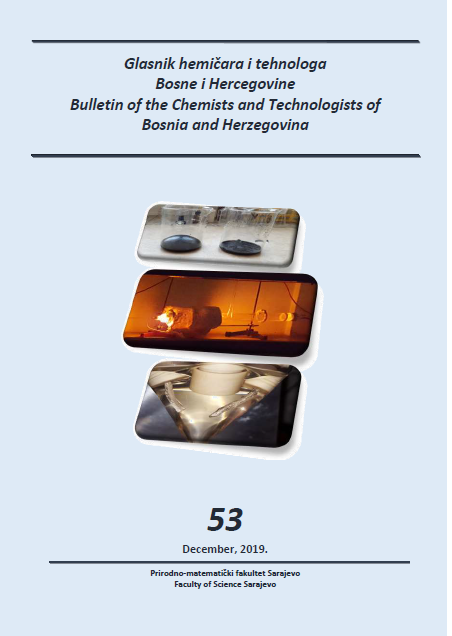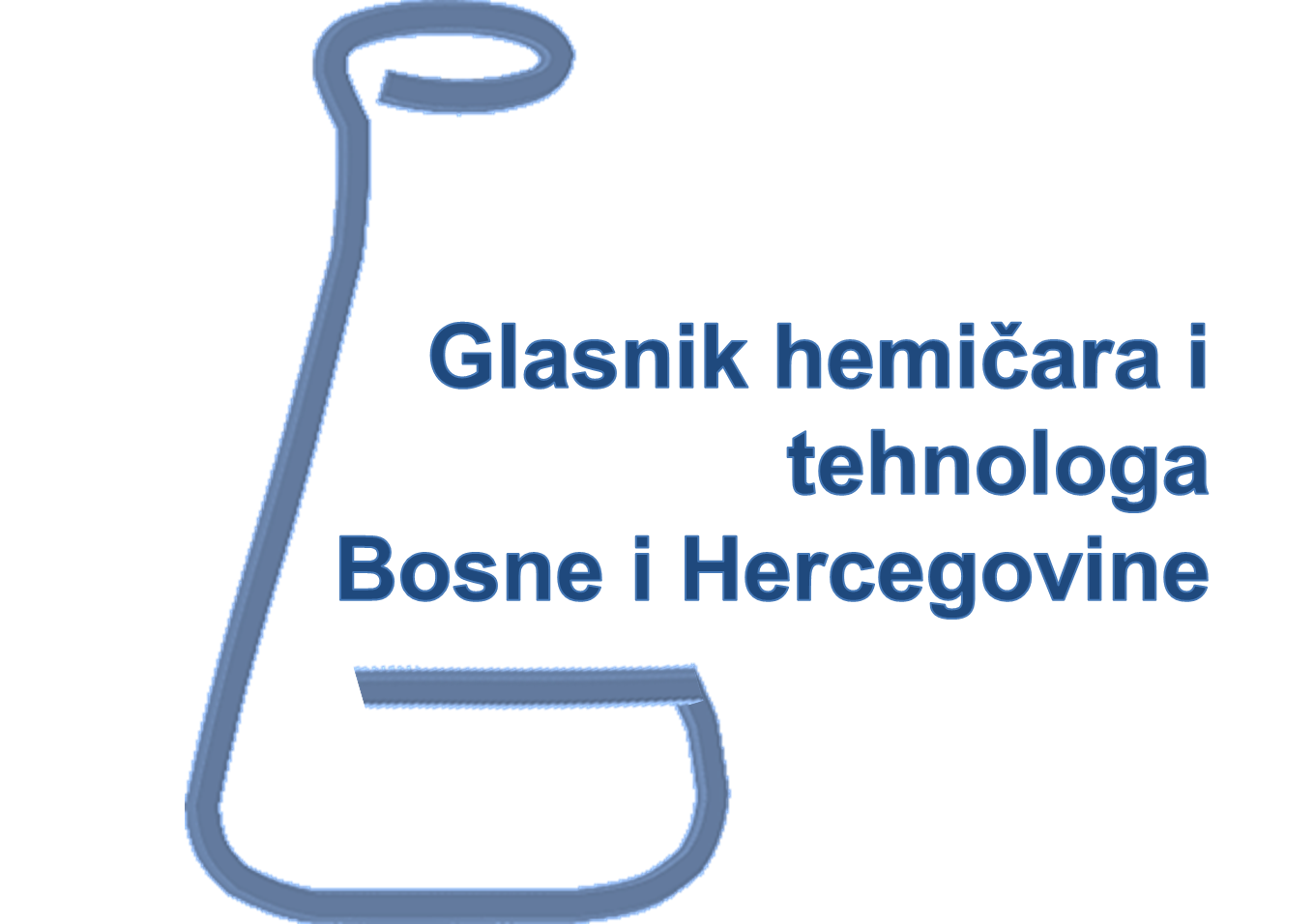|
|
Bulletin of the Chemists and Technologists of Bosnia and Herzegovina
Issue 53
Publication date: December 2019 |
|
Table of contents
Protection of fuel filter with alkaline and acid zinc coatings Original Scientific Article
Šćepanović Jelena, Herenda Safija, Korać Fehim, Vuksanović Darko, Radonjić Dragan
Abstract: Galvanic coatings are applied so that the surface of the base material obtains appropriate properties, corrosion resistance, durability, aesthetic appearance, and long-term application in the appropriate industry. In this paper, the aim was to protect steel fuel filters with alkaline and acid zinc coatings of different thicknesses. The coating of zinc, which is applied from the alkaline electrolyte, provides good corrosion protection with excellent coating flexibility. The thickness of the coating by the X-ray fluorescence method was tested, followed by coating tests, corrosion resistance, and electrochemical tests. The results of adhesion showed a high quality coating, as no corrosion occurred during the test. The corrosion resistance tested by the salt chamber method speaks of the appearance of white and red corrosion. On alkaline electrolyte coatings, white corrosion occurred after 168 hours of exposure to the salt test, while on white zinc samples there was a white corrosion after 240 hours of exposure. Tafel polarization diagrams have been determined: corrosion potentials, current intensities, anode and cathode Tafel coefficients and calculated corrosion rates. The active and passive corrosion zone is determined by the cyclic voltammetry.
Bulletin of the Chemists and Technologists of Bosnia and Herzegovina 53, 1-8.
Calibration bath uncertainty in precision temperature measurements Original Scientific Article
Đekić Maja, Brkić Inasa, Hodžić Nedžadeta, Čohodarević Semir
Abstract: Calibration baths are widely used in many laboratories worldwide for the calibration of thermometers by comparison. They come in different shapes and sizes and use different media (water, alcohol, silicon oil etc.), but a certain nonuniformity of theused media is always present. During precision temperature measurements, uniformity (homogeneity and temporal stability) of a calibration bath is of the utmost importance since its contribution to total measurement uncertainty is the largest. The temperature gradient can be described as a change of temperature at different positions inside the bath working volume. Temporal temperature stability depends on many factors such as: the bath temperature, control system, bath construction and the flow of the used media inside the bath, just to name a few. In this paper, we investigate uniformity of a cylindrical calibration bath. Homogeneity is determined by measurement of axial and radial temperature gradient inside the bath. Stability is examined by observation of the change in temperature reading during certain period of time. The obtained results are compared with manufacturer specification and can be used for determination of calibration bath contribution to total measurement uncertainty during calibration of thermometers.
Bulletin of the Chemists and Technologists of Bosnia and Herzegovina 53, 9-13.
Phenolics content and antioxidant activity of three Sorbus species Original Scientific Article
Tahirović Azra, Mehić Emina, Kjosevski Nina, Bašić Neđad
Abstract: The phenolic content and antioxidant activity of Sorbus aucuparia L., Sorbus aria (L.) Crantz and Sorbus austriaca (Beck) Hedlund leaves and fruit were investigated. The quantification of total phenolics, flavonoids and phenolic acids was performed using the Folin–Ciocalteu, Dowd and Arnow methods, respectively. The antioxidant activity of the extracts was evaluated using DPPH, TEAC and FRAP methods with Trolox as a standard. Leaves had a higher content of phenolic compounds and antioxidant activity than the fruits for all species. The highest content of phenolics (76.11 mg gallic acid equivalents (GAE)/g plant), flavonoids (15.86 mg rutin equivalents (RE)/g plant) and phenolic acids (44.54 mg caffeic acid equivalents (CAE)/g plant) was determined for S. austriaca leaves. Sorbus austriaca fruit had the highest content of phenolics (13.21 mg GAE/g plant), flavonoids (1.82 mg RE/g plant) and S. aucuparia fruit had the highest content of phenolic acids (9.05 mg CAE/g plant). The antioxidant activity was in the range: DPPH=38.42–274.52 μmol Trolox equivalents (TE)/g plant; TEAC=43.23–403.02 μmol TE/g plant; FRAP=47.13–706.96 μmol TE/g plant. The highest values of antioxidant activity were found for S. austriaca leaf and fruit extracts while the lowest values were determined for S. aucuparia leaves and S. aria fruit. The antioxidant activity was highly correlated with total phenolics and phenolic acids.
Bulletin of the Chemists and Technologists of Bosnia and Herzegovina 53, 15-21.
Toxic compounds in homemade spirits in Bosnia and Herzegovina: A pilot study Original Scientific Article
Marjanovic Aleksandra, Omeragic Elma, Djedjibegovic Jasmina, Turalic Amila, Lugusic Aida, Caklovica Faruk, Sober Miroslav
Abstract: The main aim of this preliminary study was to investigate the presence of potentially toxic compounds (methanol, hydrocyanic acid and urea) in homemade fruit spirits produced in different parts of Bosnia and Herzegovina. A total of 15 samples of 8 different fruit spirits were analyzed (apple, apricot, cherry, grape, pear, plum, quince and juniper). Content of hydrocyanic acid was higher than maximum permissible level in 5 out of 15 samples. In general, the average content of methanol was higher in samples from Bosnia comparing to the samples from Herzegovina (874.62 vs. 563.99 g/hL of pure alcohol), but still was lower than maximum concentration proposed by national regulation (1200 g/hLof pure alcohol for fruit spirits and 1000 g/hL of pure alcohol for grape spirit) except for one grape spirit sample (1162.2 g/hL of pure alcohol). Urea was detected in all analyzed samples (5.819 to 77.82 mg/L) with the average concentration of 37.95 mg/L. Since this is, to our knowledge, the firststudy that included the chemical analysis of homemade spirits in BiH, these results are of great importance for the further research.
Bulletin of the Chemists and Technologists of Bosnia and Herzegovina 53, 23-27.
Changes in mineral content in trainees’ blood and urine due to high-intensity training Original Scientific Article
Hajdo Diana, Memić Mustafa, Domitrović Robert, Šabanović Elma
Abstract: High-intensity training is becoming more popular nowadays when people have less time to engage in prolonged physical activity. Expertly led high intensity training is a safe way to achieve desired fitness goals. The aim of the study was to check if there were significant changes in the concentrations of sodium, potassium, calcium, magnesium, zinc, iron and copper in the blood and urine of twelve trainees after a short but intense training. Blood and urine sampling was performed before and after high intensity training where bodyweight exercises and exercises with external load were used. Statistical analysis was performed using paired t-test (2-tailed) with α=0.05 as statistical significance. The results obtained showed that the measured mineral concentrations varied as a result of intense physical activity, but these variations were small and did not have a general trend of increase or decrease of analyzed mineral content. Based on these results, it can be concluded that, from the standpoint of the mineral concentrations loss, short high-intensity training is safe for the trainee’s health.
Bulletin of the Chemists and Technologists of Bosnia and Herzegovina 53, 29-35.
Determination of water content in infant formula Original Scientific Article
Jurković Josip, Sulejmanović Jasmina, Tahmaz Jasmina, Gavrić Teofil
Abstract: Water is one of the most important constituents of food, very important to be accurately quantified. Furthermore, water content affects the stability and shelf life of food. The evaluation of most chemical parameters is based on dry mass and many methods use heating which result in losing all volatile compounds, including water. Also, it is much harder to extract all of water if we have a complex matrix. Regarding this, the aim of this study was to determine water content in different infant formula by various methods. For examination of water content in three different types of infant formula three different techniques were used (oven sample processor, drying oven and halogen drying) and compared to classical Karl Fischer titration with two different solvents. Each sample was measured in ten probes, and classical Karl Fischer titration was used as a reference. The results showed that the reference method was the best regarding speed of measurement, amount of sample needed and obtained water contents (3.01- 4.35%), followed by Karl Fischer in boiling methanol (2.80-4.30), oven sample processor (2.96-4.23%), halogen drying (2.74-4.03%) and drying oven (2.38-3.52). Methods using heating could not remove all water from the sample within a reasonable time.
Bulletin of the Chemists and Technologists of Bosnia and Herzegovina 53, 37-42.





